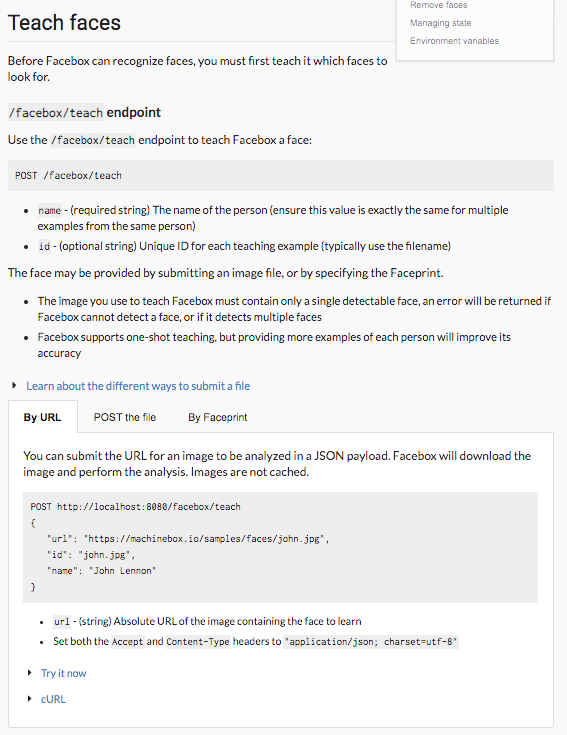
How my startup got to a successful exit with a developer-first strategy
In January of 2018, I helped found a machine learning startup with 2 other people. 9 months later I sold it for $5 million. What was our secret? We put developers first. In this post, I intend to share with you how putting developers first can help your tech project/startup/company/enterprise really take off.
Our goal with Machine Box was to make it as simple as possible to build, deploy and scale machine learning. We crammed a lot of magical machine learning stuff into Docker containers, and wrapped them in an API so simple that even the most junior developer on a team would be able to build some amazing things. Then, we made it free for anyone to try.
We focused on the developers
We made them a first-class concern of our product, and we made sure that they’d be able to evaluate the technology before they pulled out their credit card. We tried really hard not to inundate them with quotes and “just checking in” e-mails without offering them something useful in return.

Instead, we focused on building something useful.
Our APIs were designed to tell a story around the product, so that our users could think in terms of problem-solving, instead of scrolling through endless docs looking for the right POST request syntax. We worked hard to keep them simple, never adding features unless they were completely validated by our users.
And it worked.
I think developers loved that they could just download the containers, spin them up, and access some sexy API docs. We open-sourced things like imgclass and a Go SDK to make it even easier to use our boxes, we wrote blog posts detailing how to deploy the models into different frameworks, and we taught workshops on how to implement machine learning. Thousands of people signed up, extraordinary feedback came pouring in, and companies asked for quotes. Other people started releasing video tutorials on integrating Machine Box, writing blog posts about what they had accomplished, and open-sourcing SDKs for other languages.
More importantly, use cases were getting solved and products were getting released. We’ve had customers tell us we’ve saved them both time and money delivering production-ready solutions to the market. Because software is everywhere, so to are developers. I can’t think of a market that doesn’t have some kind of software powering at least a portion of its productivity.
Real-life wins for developers
Here are some examples of how developers were able to win with Machine Box, hopefully demonstrating how you can win by focusing on developers as well.
Mr. Borgo (I’m not great at coming up with anonymized names) works in an IT department for a massive enterprise. He was tasked with rearchitecting a data-generation step in their product workflow to reduce errors and the reliance on human labor. A developer at a ML conference told him about Classificationbox so he signed up for the FREE account, downloaded the box, built and tested a solution to his problem, and wrote me an e-mail asking for an enterprise license. Mr. Borgo is not a machine learning engineer or a data scientist. He’s a badass full-stack developer who was tasked with solving a complex problem. He chose Machine Box because it made his life a lot easier.
The team behind LearnerVerified was tasked with delivering a new product for their testing centers across the country. The use case was relatively simple; stop people from paying their friends to take their tests for them. The solution, however, could have been pretty complex. They need to train a face recognition technology with a single picture of the person from their driver’s license, and then continually check the test-taker to make sure it is still them. You’re talking about building multiple solutions to solve this use case using totally different machine learning and computer vision techniques. Instead, the team discovered Facebox through the community. It solved their problem immediately, no need for becoming an expert in machine learning.
On multiple occasions, we have heard from developers working for companies building asset management applications who are building new machine learning-powered workflows that auto-tag assets to make them more searchable (among other things). The developers who found us did so because they hit one of several walls when integrating existing Machine-Learning-as-a-Service (MLaaS) providers like Google, Amazon and others. They told us that they found us by searching the internet for “on premises machine learning” and/or other similar terms. What they told us they loved is that they could download our boxes for free, run them locally, and start to build an integration, all without having to contact some kind of sales department. By the time we heard from them, they already decided they were going to go with Machine Box. According to the CEB, buyers are typically 57% of the way through their decision-making process *prior* to reaching out to the sales rep *for the first time.*
That is the power of enabling developers!
So why did we sell?
Because the developer experience is the tip of the spear, and we saw a great opportunity to explore delivering more complete solutions with Veritone. We have a real opportunity to combine the developer-first mentality with a robust platform that caters to the kinds of things we originally could only dream of supporting; enterprise-scale, having a SaaS option, orchestrating our models with other models, and generally delivering a turnkey solution to those who needed it most.
We still get to deliver Machine Box as Docker containers directly to developers, but we now also have the option of coupling that with a whole lot more.
What I’ve learned from this experience is that we are in the age of the developer, and in a lot of ways, they hold the keys to the future. I remain humbled by their support and encouragement.
I’d also like to encourage you to get in at the ground floor of this AI platform we’re building. We’re really only scratching the surface of the amount of problems that can be solved with developers building great things on top of aiWARE, and we’d love to get your thoughts and feedback.
What comes next?
For my humble startup, we’ve found the perfect place to continue to think about the developers and their experience. For you dear reader, I leave you with this parting thought; There are about 18.2 million software developers worldwide, a number that is due to rise to 26.4 million by 2019, a 45% increase. This is the fastest growing work force on the planet. It would be wise to ~~worship our future overlords~~ acknowledge their importance.
P.S. — Medium does not support strikethrough.
How my startup got to a successful exit with a developer-first strategy was originally published in The Startup on Medium, where people are continuing the conversation by highlighting and responding to this story.